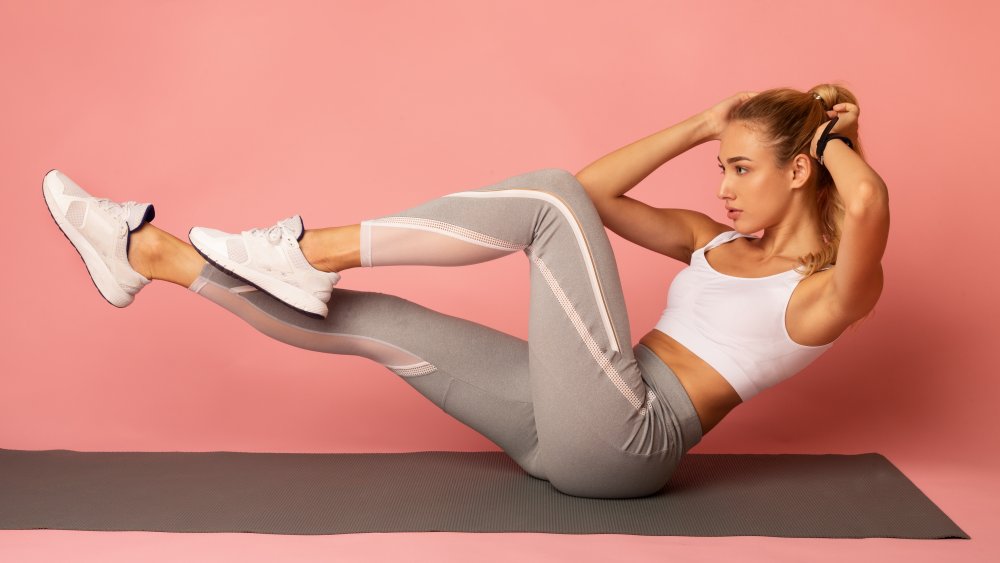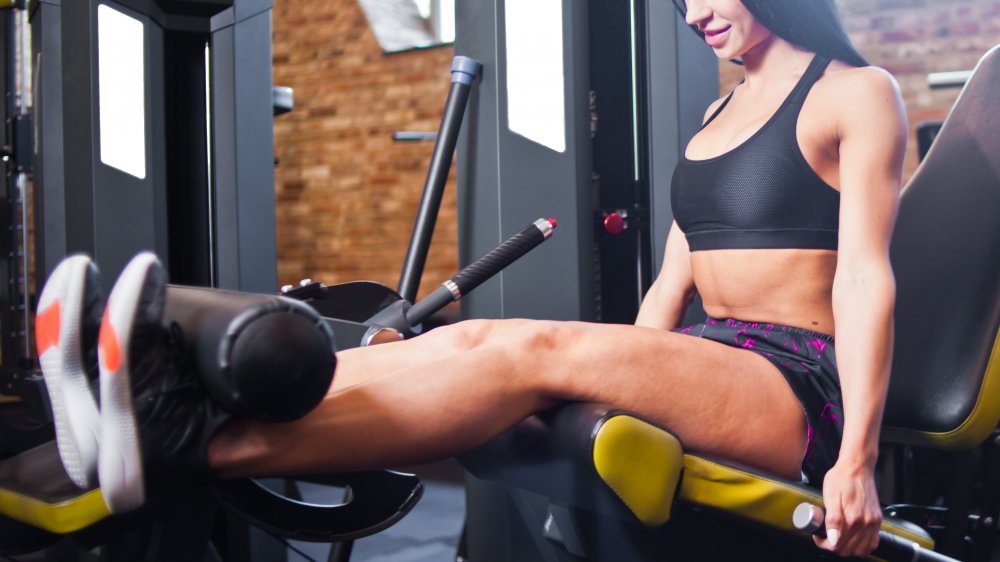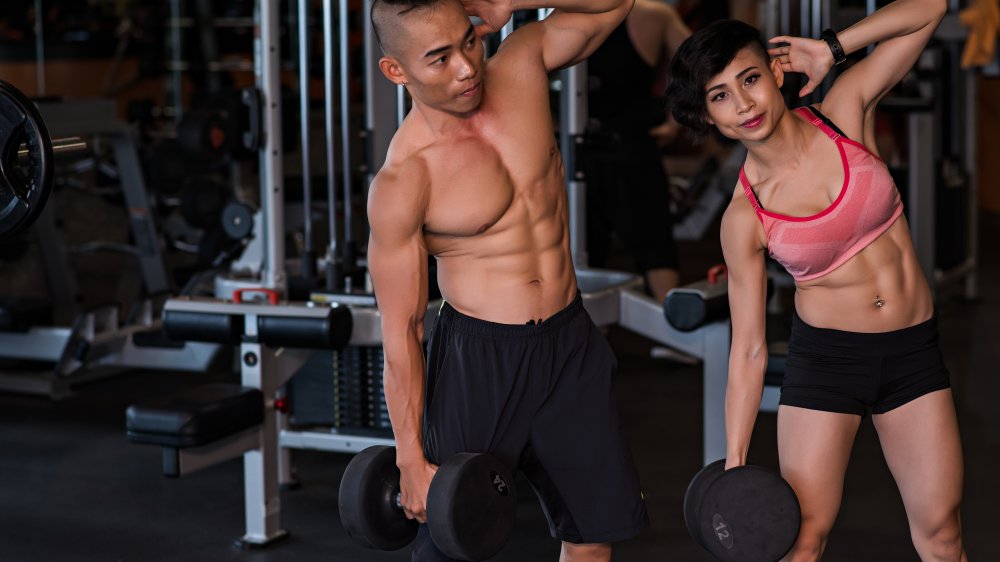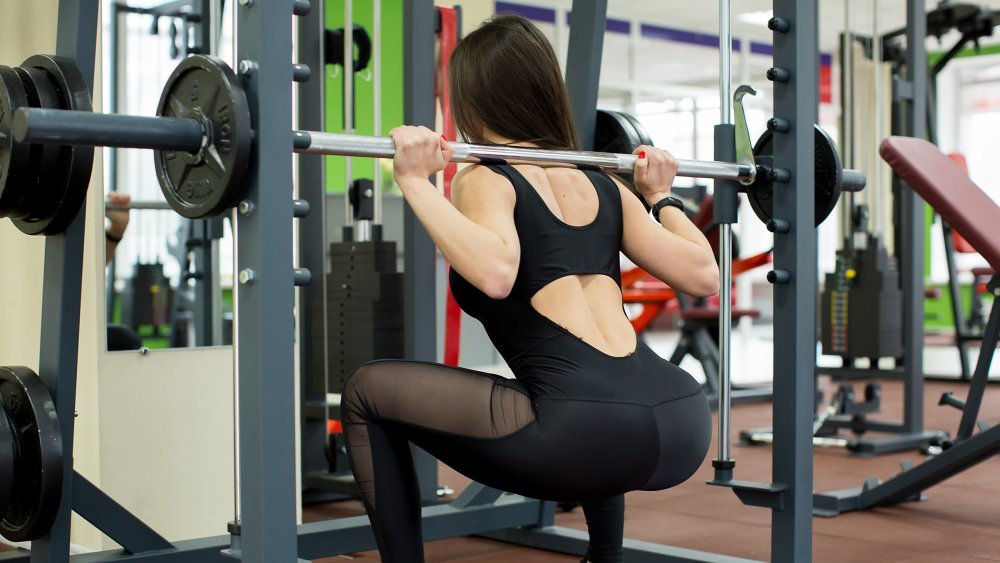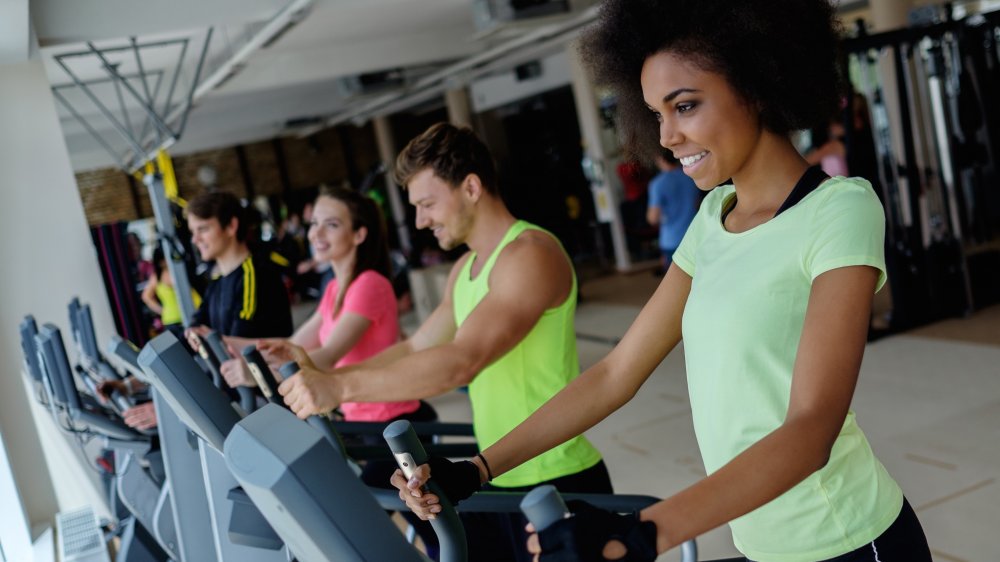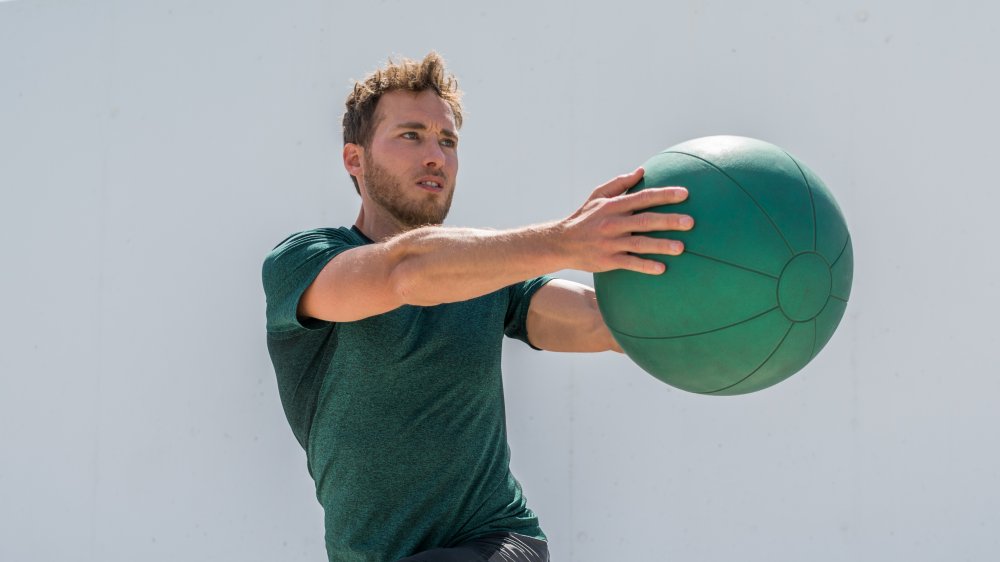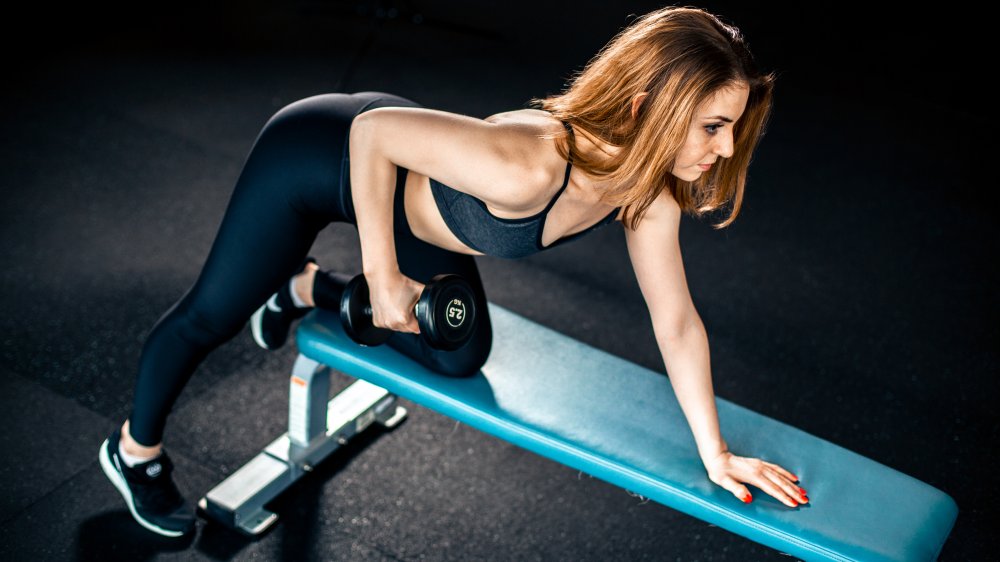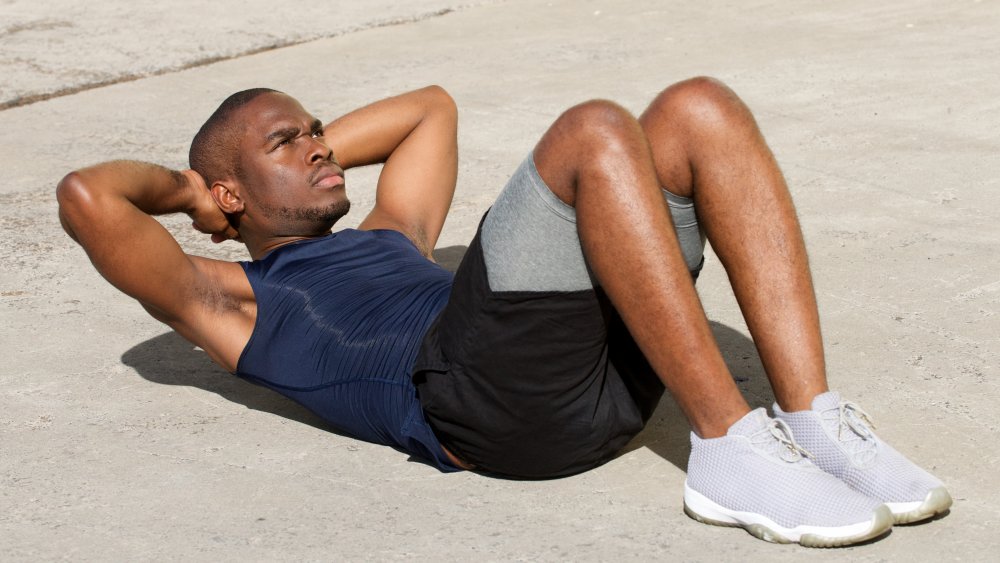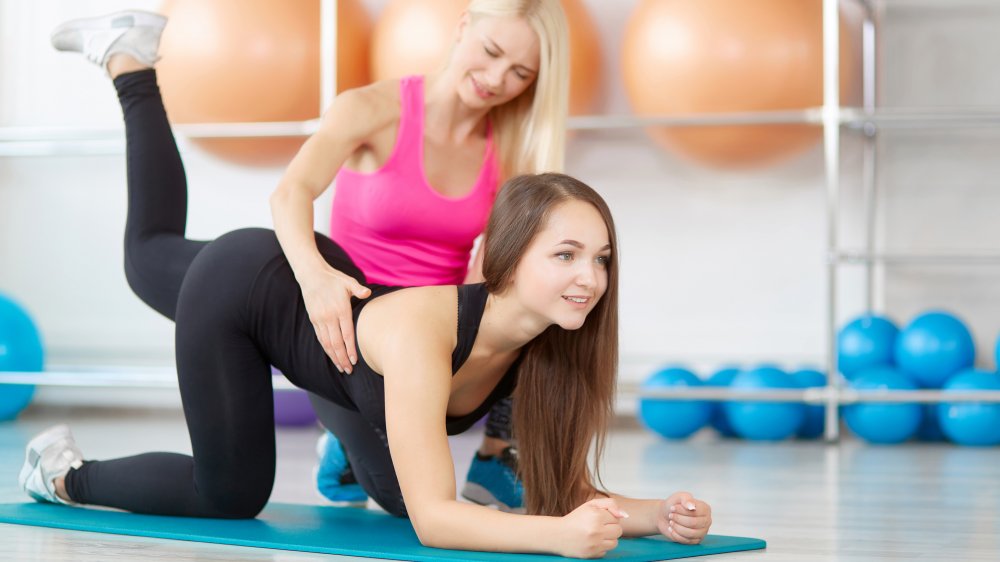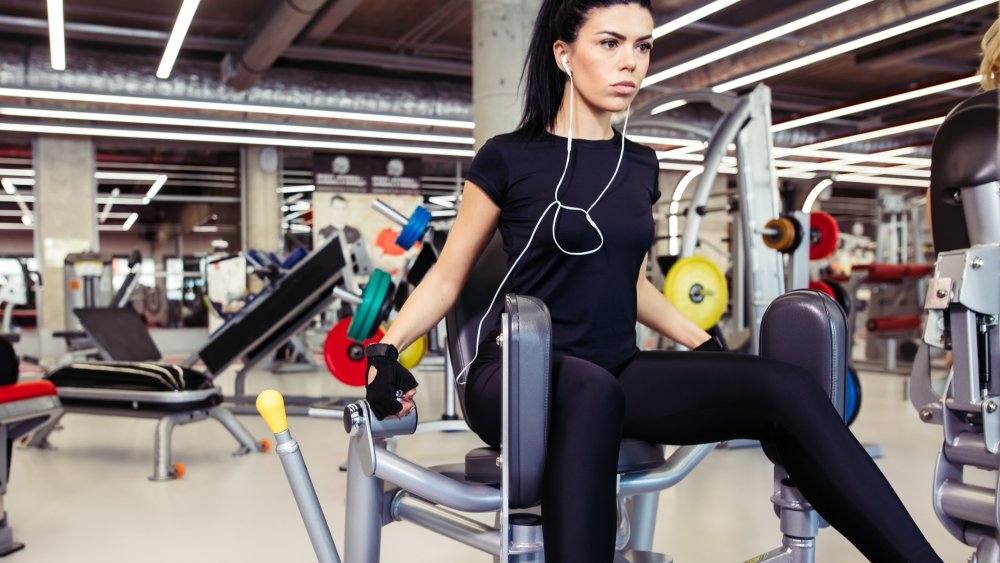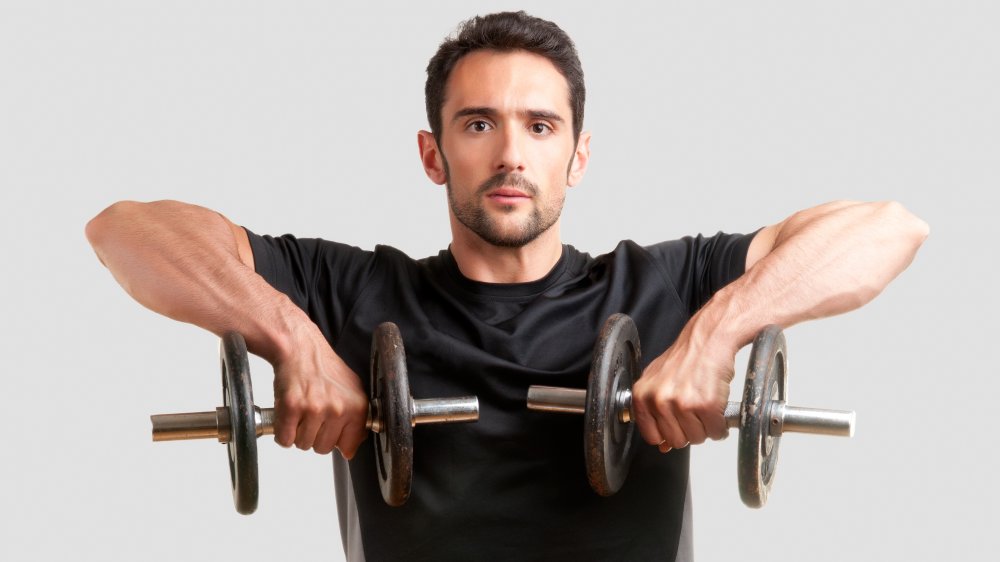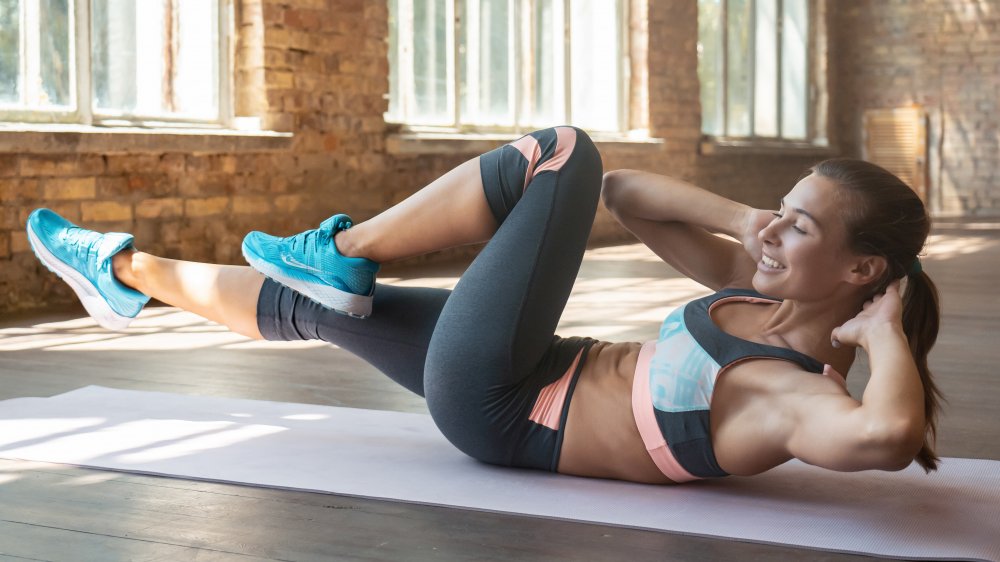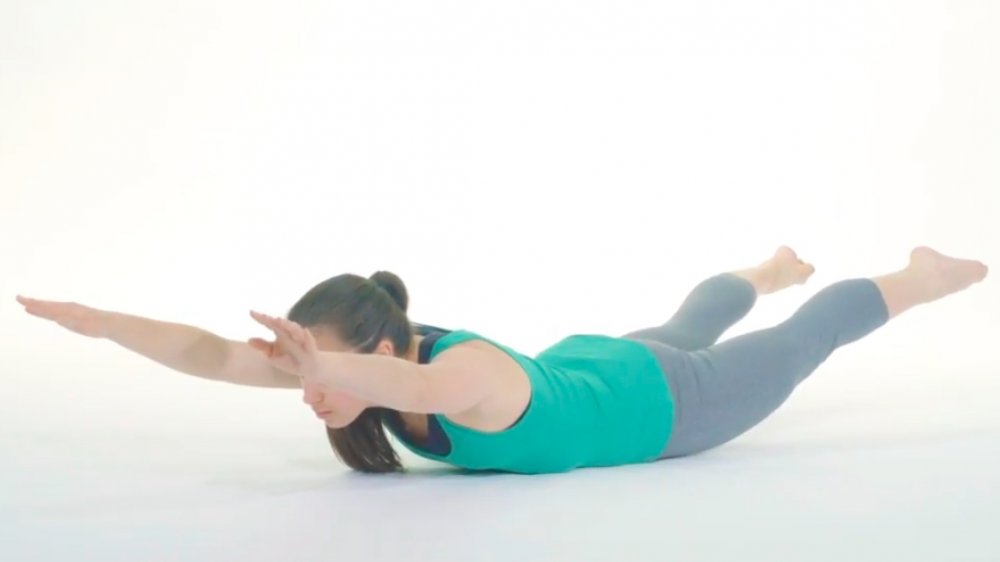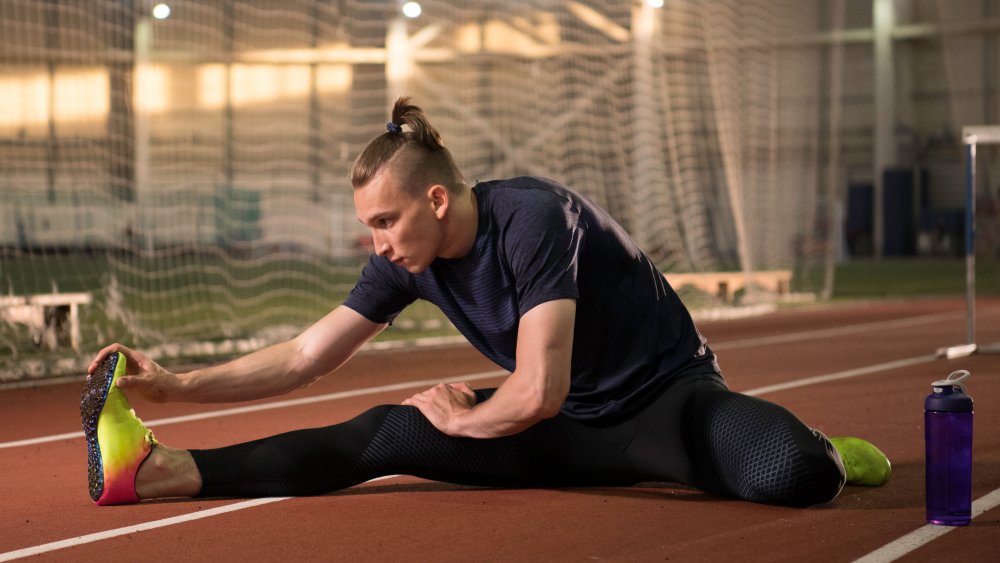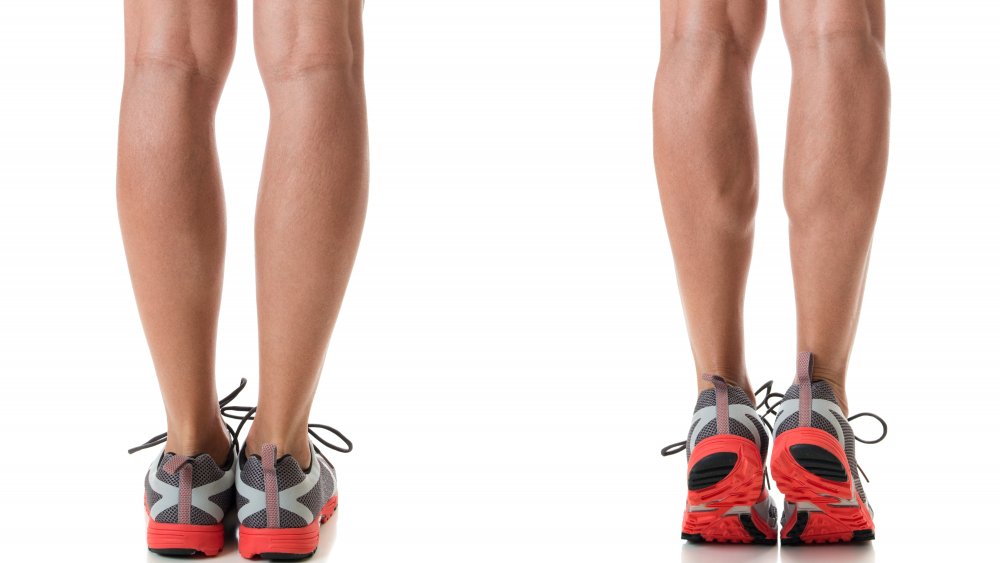Never Do These Exercises At The Gym Ever Again
Many Americans love to exercise. By 2018, the average U.S. adult between the ages of 18 and 65 was spending a remarkable $155 per month on fitness alone (via MarketWatch). In a survey of 1,170 adults, Myprotein found that regular gym-goers log over 12 hours a week on health and fitness programs. While that number is based on people who are working out regularly and not the population as a whole, it still demonstrates that many are interested in getting, or staying, fit.
If you're going to put the time and effort — not to mention money — into the gym, you surely want to be doing the most effective exercises possible, right? That means that workouts that are old-fashioned, inefficient, or that ramp up your risk of injuries simply have no place in a modern gym regimen. But which exercises are worth sticking by, and which ones need to be banished to the training trash bin?
Read on as expert trainers, researchers, and physicians offer up their picks for the exercises you should never go again — plus the moves you should swap into their slots for a safer, more effective overall training program.
The leg extension machine can kill your knees
Many people hit the leg extension machine repeatedly when they first start going to the gym because the machine is so clear and obvious in its simplicity. Just sit down, slip your feet under the adjustable roller pad and lift. It's typically fairly easy and you can often move a lot of weight, even as a beginner. The problem with the machine though, and the reason it should be avoided, according to certified strength and condition coach Chris Ryan, is the damage and strain it can place on the knee.
"The leg extension machine applies constant tension to the anterior cruciate ligament (ACL) and increases the risk of the patella (knee cap) sliding right or left," Ryan told Best Life. It also stresses the back of the knee cap, where the thin cartilage is very susceptible to injury, he said. Instead of the leg machine, Ryan suggested training your legs, quads, and glutes with exercises that are less likely to cause muscle imbalances and that also improve overall muscle stability and coordination, such as deadlifts, squats, and lunges.
Dumbbell side bends are an ineffective time suck
Dumbbell side bends are another simple move novice gym goers flock to. What's not to like? You just stand holding a dumbbell in one hand, and then lean in that direction of the hand holding the weight until you feel a stretch. Then you straighten back up, contracting the muscles in your waist to strengthen your obliques.
The problem? Dumbbell side bends don't even work the obliques — at all, strength coach Matt Cheng told Best Life. "Most of the time, it involves too much lateral bending and twisting of the spine," he explained. Fitness site Stack agrees with that assessment. Among the many problems with side bends, according to Stack, is that they tilt your torso awkwardly. The exercise may seem to be a good way to "spot reduce," or reduce fat in a specific part of your body (in this case, the love handles), but that just isn't true.
Perhaps worst of all, this workout is just too damn easy to be effective. To actually build oblique strength, Cheng suggested doing hanging oblique knee raises on a bar, which are safer and far more effective.
Skip the Smith machine and opt for traditional squatting
The Smith machine is designed to assist you during barbell exercises, offering a fixed up-and-down movement that supposedly prevents you from moving incorrectly during a lift. The lift itself is simple to perform: Hold a weighted bar over your neck and upper back with your feet hip-distance apart. Unlock the bar and lift it, shifting your weight back onto your heels. Contract your abs and lower into a squat.
Since they're relatively simple, many consider Smith machine squats a safer alternative to traditional squats, but that's not actually true, strength coach Lou Schuler told Shape. When you lower into a squat using a Smith machine, your back stays straight and almost perfectly perpendicular to the ground. That compresses your vertebrae, he explained. The lift can also stress your knees while neglecting your glutes, hamstrings, and core that a traditional squat would help to make stronger.
Instead of the Smith machine squats, Schuler recommended dumbbell or barbell squats in which you perform the same squatting motion without the help of a machine. They train more of your entire lower body and core, he said, without over-stressing your joints. Alternatively, regular ole bodyweight squats will work too.
Say goodbye to the elliptical for good
No matter how you look at it, elliptical machines are weird. Are you supposed to be running? Walking? Climbing stairs? The bizarre machines got their start in the early '90s when inventor Larry Miller created a machine for his daughter to help her avoid knee injury. That early prototype, which mimicked the path feet travel while jogging, caught the eye of the fitness company Precor and by 1995 the first elliptical machines were on the market.
Ellipticals are an amazingly simple machine — and that's likely why gym newbies gravitate to them. But since the range of motion is small, they're also easy to slack on, Christian Fox, a certified strength coach told Shape. Fitness trainer Emily Samuel agrees. In an interview with Business Insider, she explained that ellipticals are fine for providing extremely low-impact cardio that's easy on people's joints. However, she added, "I really would recommend doing a jump rope instead."
Fox, on the other hand, prefers the rowing machine as an alternative. "Rowing incorporates a lot of muscle mass into the movement, and with a little technique can provide a wallop of a workout," he told Shape.
If you're going to toss a medicine ball, only throw it forward
After boulders, medicine balls may be the oldest fitness tool known to man, dating back more than 3,000 years. According to Gizmodo, the ancient Greek physician Hippocrates is known to have told his injured patients to toss around primitive medicine balls as a means of regaining their mobility.
But just because medicine balls have a long and storied past, that doesn't mean everything you can do with them works. The backward medicine ball rotation toss, in particular, is one move most people should avoid, trainer Jason D'Amelio told CNN. To perform the move, you stand facing away from a wall while holding a medicine ball. You then twist sharply at the waist, throwing the ball into the wall and catching it again before swinging back to your starting position.
The move may look fun, but it's never wise to forcefully rotate your spine backward, warned D'Amelio. This motion could even lead to a slipped disc, he explained. Instead, he recommends only throwing a ball from side to side or forward, both of which are less likely to cause injury to the spine.
Triceps kickbacks are tough to pull off correctly
Trainers have been suggesting the triceps kickback since the '80s as an easy and effective way to build upper body strength. The lift itself is easy enough: Position yourself on a weight bench with your right knee and right hand resting on the bench. Then, pick up a dumbbell with your left hand, keeping your back straight and head looking forward. Pull your upper arm back close to your torso and bend the elbow at a 90-degree angle. The lift occurs when you move only at the elbow, raising the dumbbell behind you until your arm is fully extended. Alternate and repeat.
While the move is widely known and used, CrossFit instructor Dan McCarthy explained to GQ that it has some serious drawbacks as well."Kickbacks put your shoulder in a poor position to move effectively," he cautioned. "They also don't allow you to load the movement with much weight." And, if you can't move correctly or lift a significant amount of weight, you likely won't get the results you're looking for either, he said. Rather than triceps kickbacks, McCarthy recommends an even older but more effective training move: push-ups!
Sit-ups pose a serious danger to the spine
Sit-ups have long been the go-to exercise in the physical fitness world — but perhaps not for much longer. The Wall Street Journal compiled a thorough list of reasons people should give up on the standard sit-up. First, sit-ups aren't effective for strengthening abdominal muscles. Sit-ups also put you at incredible risk for injury. As brought out by the publication, a study of 1,500 U.S. Army soldiers revealed that 56 percent of the injuries experienced during their arduous physical fitness test were caused by sit-ups. Finally, sit-ups can put a lot of compressive force directly on the spine, Stuart McGill, a professor of spine biomechanics at the University of Waterloo, told WSJ.
In his work, McGill has found that force paired with repeated flexing motions can cause incredible damage to the spine. McGill's advice? Nix the sit-up and try the safer variation he developed — a modified curl-up — in which the hands are placed under the lower back and your shoulders only slightly leave the floor. A study in the Journal of Orthopaedic and Sports Physical Therapy also demonstrated that exercises done with an inflatable Swiss exercise ball activate more muscles than bent-knee sit-ups or crunches.
Donkey kicks are a terror for the lower back
There's a reason nobody dreams of being strong like a donkey. Maybe that's why donkey kicks — which are said to strengthen your glutes — are a move best avoided. To perform the move, gym-goers get down on their hands and knees (like a donkey). Then, with hands and feet shoulder-width apart, you tighten your core, squeeze your glutes, and lift one leg behind you, keeping the knee bent at 90 degrees until the sole of your foot is parallel with the ceiling.
Sounds easy enough, right? Well, according to exercise physiologist Kelly Drew, far too many individuals perform donkey kicks incorrectly. "Most people use momentum and their lower back muscles instead of isolating the glutes," she explained to Prevention. This is a problem because nothing is then supporting your back, significantly increasing your risk of injury.
In place of donkey kicks, Drew suggested single leg squats which hit the same area in a much safer way. To do them, stand on one leg while placing both your arms across your chest. Next, sit back, bending your knee and lowering your body about six inches, keeping your hips level. Slowly stand back up to complete a single rep.
The thigh machine is as ineffective as it is awkward
The thigh machine is, well, awkward considering it calls for repeatedly separating and closing your legs. Even if the unusual position doesn't bother you and you actually enjoy the machine (perhaps because you never have to wait in line to access it), you may still want to reconsider.
"Besides looking ridiculous and possibly straining your knees, [thigh machines are not] an effective way to challenge your hip abduction and adduction," personal trainer Pete Williams cautioned in an article for Muscle & Fitness. Yes the machine is just too inefficient in what it does to trigger any significant gains in muscle strength or development.
For people looking to shape, tone, or strengthen their inner and outer thighs, Williams instead recommended working out with a mini-band. "Place a mini-band around both legs, just above your knees," he advised. "From a partial squatting position and keeping your left leg stationary, rotate your right knee in and out for 10 reps." Next, you'll want to switch to your other leg and repeat the exercise.
Upright rows can make tight chest muscles even tighter
The upright row is a classic lift for strengthening the shoulders. It's performed by standing with a pair of dumbbells at arm's length in front of you. You then lift the weights up in front of you, keeping them close to the body until your elbows reach shoulder height.
While some trainers will recommend upright rows for avid gym-goers, Alexandra Smith, a Los Angeles-based trainer, told SilverSneakers that the move is an especially bad idea for people who are middle-aged or older. Because these individuals may sit slouched for long periods of time, they're more likely to have tight chest and upper back muscles as well as weak neck and middle-back muscles. That problem can become even worse with upright rows, the site explained, since lifters end up pulling weight vertically with muscles that are already tight, thus tightening them ever further.
Instead of upright rows, certified strength and conditioning specialist Lou Schuler suggested adding pushups to your routine (they stretch the chest muscles while building strength) plus lat pulldowns, which also help you strengthen your upper body without the pulling damage rows can bring about.
Bicycle crunches could crunch your spine
As the name implies, bicycle crunches look sort of like peddling a bike while lying on the ground. The exercise calls for lying on your back with your legs out straight. Next, place your fingers behind your head with your elbows pointed out. Press your lower back to the ground, lift your shoulders and bring one knee in toward your chest, rotating your torso so the opposite elbow goes toward your lifted knee. Next, alternate legs. Rinse, repeat.
Many experts recommend performing bicycle crunches as quickly as possible as a form of cardio training, but this is actually when the move becomes dangerous, according to trainer Alycea Ungaro. She told CNN, "As exercisers drop in and out of abdominal flexion, losing muscle tension in the midsection, the low back gets wrenched in and out of extension with little support." This can lead to muscle spasms, herniated discs, and other spine injuries. If you don't want to replace this exercise, you'll want to at least modify it. Do this movement slowly and really focus on form to reduce injury risk, Ungaro cautioned.
The Superman is super bad for your back
This move gets its name from the iconic pose the Man of Steel strikes once he takes to the sky to avert the end of the world. You know how it's done: Lie on the floor, facedown, with your arms extended in front of you and your legs extended behind you. Then pull in your glutes or belly, pulling your back to the floor and raising your arms, legs, and chest in a position that looks like you could be flying.
The Superman is supposed to train your core, lower back, shoulders, and glutes. But Anthony J. Yeung, a certified strength and conditioning specialist, revealed in an article for MyFitnessPal that this Superman exercise also "cranks your lower back into hyperextension while putting tremendous load and compression onto your lumbar spine." Over time, that leads to lower back damage that even Superman himself wouldn't be able to escape.
Yeung recommended retiring the superhero workout from your routine and swapping in a move that allows you to maintain great posture throughout as well as focuses on conditioning your entire core — back, abs, and obliques. His pick: the single-arm farmer's carry.
The hurdler stretch can wreak havoc on your knees
The hurdler stretch was a gym class staple for many. It calls for sitting with one leg stretched out in front of the body, either fully extended or bent depending on your flexibility. The other leg is angled slightly behind the body with the knee bent and the weight is on the inner thigh.
The problem? This stretch puts too much stress on the knee, Rick Richey, an instructor at the National Academy of Sports Medicine, explained in an interview with Shape. In its stead, Shape recommended the lizard pose stretch. To perform it, get into the yoga position downward facing dog. Then "step right foot outside of right hand and bend the knee, coming to a lunge position, right thigh parallel to the floor, toes turned slightly out." Next, rest your elbows on the floor, keeping your hips square and your neck and spine in line. Press your left heel away from your body and you'll effectively engage your hip flexors, hamstrings, and quads — the same muscles targeted by the hurdler stretch, only without the knee strain.
Calf raises are an incredibly overrated exercise
Standard calf raise are easy and may be a staple in your workout routine. However, they are a highly overrated exercise, according to exercise physiologist Mark Kovacs. Kovacs told Stack that while calf raises are okay for building initial strength when you're first getting into shape, most people don't need to do them. "If you're doing compound movements, then you're getting some pretty good calf development already. Isolated strength work isn't necessarily a bad thing, but it may not be the best use of your time," he revealed. Besides, it's hard to make the calf muscles larger and it's not really needed for these muscles to be super strong anyway, according to the expert.
In place of calf raises, Kovac recommends single-leg hops (a variation of the jump squat). This move allows you to train more of the fast-twitch fibers in your calves, which are important for movements like running or jumping.

